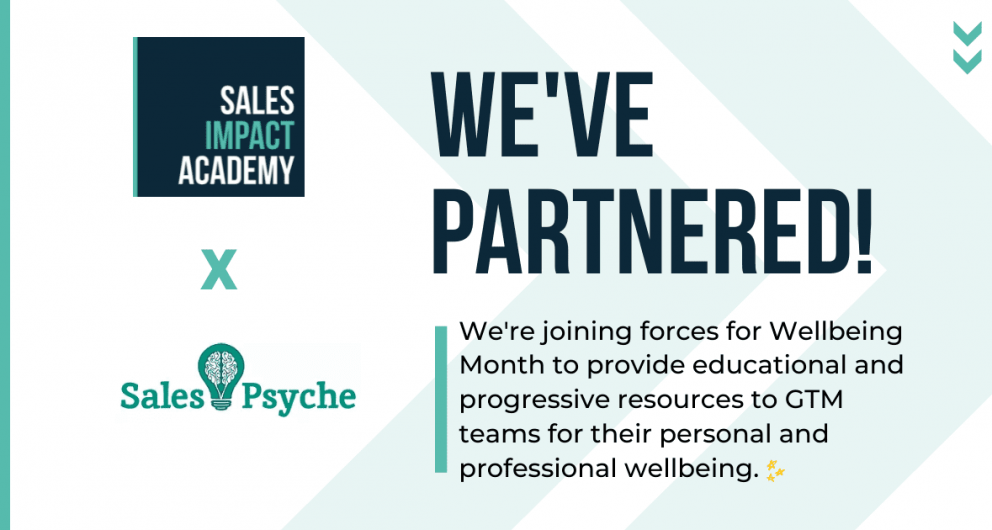- Coaches (3)
- Courses (25)
- Customer Success (10)
- Investment & Fundraising (6)
- Management & Leadership (34)
- Marketing (6)
- Prospecting (19)
- Sales (34)
- Sales Impact Academy News (23)
- Wellbeing (9)
The Keys To Customer Success as an Account Manager

- Customer Success, Sales
- Simone McNichols-Thomas
- Estimated Reading Time: 7 minutes
As Account Managers, many of us know that we can hit great customer targets, but the difficult part is when we try to sustain that growth and net revenue retention.
Customer success is not just about securing those customers — it’s about nurturing them into repeat business and developing a solid relationship with them, as they’re your best source of information.
Mallory Wheaton currently leads the Account Management & Program Management functions at Handshake, the leading early talent career platform in the U.S (newly expanded to the UK). She works with hundreds of top companies, from the Fortune 50 to small startups.
Mallory shared with us some of her top tips on achieving and sustaining 130% revenue growth as an Account Manager…
#1: Customer success should be at the centre of your business 🥇
Your few hundred customers will drive your product, your marketing, and your pricing. If you’re an Account Manager responsible for owning business growth, then taking key learnings is crucial as your business continues to grow!
At Mallory’s company, Handshake, they split out the business growth into two roles — Customer Success Manager and Account Manager, and the reason is because they serve two different purposes. The CSM works to get and keep clients, and challenges them if needed. The AM plans out the account, and maintains the relationship with the buyer.
Growth and Retention are core to Account Management Training and customer success. The average company has a net revenue retention of 120% on an IPO, so it shows just how important this metric is when it comes to account management. Investors and your leadership board will look at this metric — it matters.
#2 Net revenue retention matters 💰
At Handshake, they measure customer success on net revenue retention.
Let’s say you started with £100 from 5 customers.
The first three spend £10 more, meaning you have an extra £30.
The second leaves your service, losing you £10, and the last one downgrades, losing you £5. You’ve left with £115, which is your 115% Net Revenue Retention.
This is where you assess your customer base and decide how many of these might leave or downgrade.
Because no matter what your metrics are now, your customer has to keep investing in your business to make it profitable, and keep your numbers high. Even more, they need to advocate for you in the market, so new customers come on board, and bring your revenue.
This means your Net Revenue Retention will grow, which is a barometer of health — it tells you that what you’re offering is great for your market. It’s also likely that the higher your NRR, the more longevity your business will have.
#3 Use tangible ways to drive customer revenue growth 🚗
If you’re an AM responsible for revenue, there are a few activities you can do to drive it.
Specifically, there are four tangible ways to grow your customer base:
- Develop a deep understanding of your customers, and their problem and pain point: By talking to your customers at every single opportunity, you find out to what extent your service or product meets their needs.
- Ask open ended questions to your prospects: (Such as ‘how do you see this saving you time?’ Or ‘how would this help you meet your needs?)
- Structure contracts for growth in order to meet their needs: So something like a gold/silver/bronze tier for your product or service. It has to be something that constrains the first price point so users are encouraged to upgrade.
- Practice Negotiation: Not the Wolf of Wall Street kind! You just need to practise the skill by preparing for all objections and outcomes. Be clear on the reasons behind your pricing, and provide clear logic. If you can show your customer the ROI, it will ultimately help them understand the value of your product or service. Plus, once you’ve stated the price confidently, stop talking! This gives the customer a chance to respond, and you to learn.
#4 Act like an owner, especially if you’re a startup 🤝
As an Account Manager, make sure you notice any gaps — in process, in your product, or in a role that needs to be filled. Fill the gap, and then take credit for the problem. Explain your problem, your solution, and then how you’re going to solve it. You’re taking ownership, which is critical for startups.
In the early stages of startups, if your CEO needs something — respond quickly. The same goes for your customers. If you respond quickly, it will help support your customers, especially if they have a problem. Why? You’re not leaving them to stew in the pain of something needing to be fixed.
Practice extreme ownership of your customers. If your customer has any problem, it becomes your problem, even if it’s not your responsibility to solve it directly.
Make 100% sure your product or service comes in ahead of time, ahead of expectations, with as little drama as possible. That way you surprise and delight your customers, and set them up for loyalty to your business.
#5 Utilise your customer base 🧐
Account Managers can utilise their customer base to build insight. Use them to understand what products to build or new services to launch — they’re your best source of information, after all.
You could ask them for case studies and other sources of marketing collateral — this is important for your pre sales and post sales teams, and will help win more business.
If you’re experiencing friction around pricing as an AM, ask your current customers, because it needs to make sense to your customers.
As much as possible, get referrals from your customers, because you can continue to sell to them even beyond their initial interactions with you.
Find out more about Handshake in the UK, by checking out www.joinhandshake.co.uk
Want to learn more about Customer Success and Communicating with your Customers? Check out our ‘Customer Success Fundamentals’ course.







